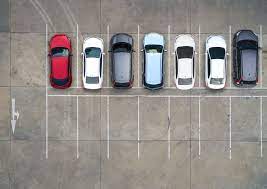TDS On Bitcoin Transfers: Buyers, Brokers, and Exchanges Must Withhold TDS.

Any gains made through VDA transactions will be taxed beginning in fiscal year 2022-23. Remember that this is a 30% flat crypto tax. That is, regardless of whether you have taxable income or fall into a lower tax category, your VDA gains will be taxed at a rate of 30%.
TDS is deducted when payments are made.
The goal of levying TDS on crypto transfers is to collect information about all VDA transactions. “TDS at the rate of 1% shall be deducted on the payment of VDA sale consideration if the total sale consideration exceeds Rs 10,000 in any fiscal year.” The TDS threshold limit is Rs 50,000 for selected persons which includes individuals and Hindu Undivided Families.”
TDS must be deducted while making payment or transferring consideration to the seller. For example, if someone is purchasing a VDA for Rs 1 lakh, Rs 1,000 must be deducted, and the remaining Rs 99,000 must be transferred or given to the seller of the VDA.
The CBDT has recently stated that the person making the payment to the seller is responsible for withholding the TDS – this can be a buyer, an exchange, or a broker. That is, TDS must be subtracted from the selling price, and the remainder can be paid or transferred to the seller after subtracting the TDS amount.
Scenario 1 – Peer-to-peer: When only the buyer and seller are involved in a transaction and no exchange or broker is involved, the buyer is required to deduct crypto tax under Section 194S of the Act.
Scenario 2 – Through an exchange or broker: When a VDA transfer is made through an exchange or broker, tax can only be withheld by the exchange that is crediting or paying the seller. However, if the credit or payment between the exchange and the seller is made through a broker (who is not the seller), both the exchange and the broker are responsible for deducting tax. However, where there is a formal agreement between the exchange and the broker that the broker will deduct tax under Section 194S, the onus is on the broker.
Scenario 3 – Exchange owns the VDA: In such instances, while the buyer or his broker is ultimately responsible for deducting the TDS, the exchange can enter into a formal agreement with the buyer or his broker that the exchange will pay the tax on all such transactions. The exchange must file a quarterly statement (Form No. 26QF) for all such transactions throughout the quarter on or before the due date, as well as its income tax return, which must include all such transactions.
Read Also : Motives To Shop for An Innerwear Online
Scenario 4 – VDA payment in kind: In addition to transferring VDA in exchange for cash, there are cases of making payment in kind (other than currency) or in exchange for another VDA, or partly in kind and partly in cash. In such a case, the buyer must release the consideration in kind only when the seller shows proof of payment of the applicable tax (e.g. TDS challan details, etc.). In the case of an exchange of VDA for VDA, both the buyer and seller must pay tax on the transfer of VDA and present the evidence to each other before VDAs can be swapped. This must then be disclosed in the TDS statement, together with the challan number, by completing Form 26Q. However, if VDA is transferred via an exchange, the onus to deduct and pay TDS might be shifted to the exchange, providing both the buyer and seller provide written consent.
Binocs is a platform which manages your taxes on crypto exchange and crypto portfolio safely within no time. Check out the website right away.




